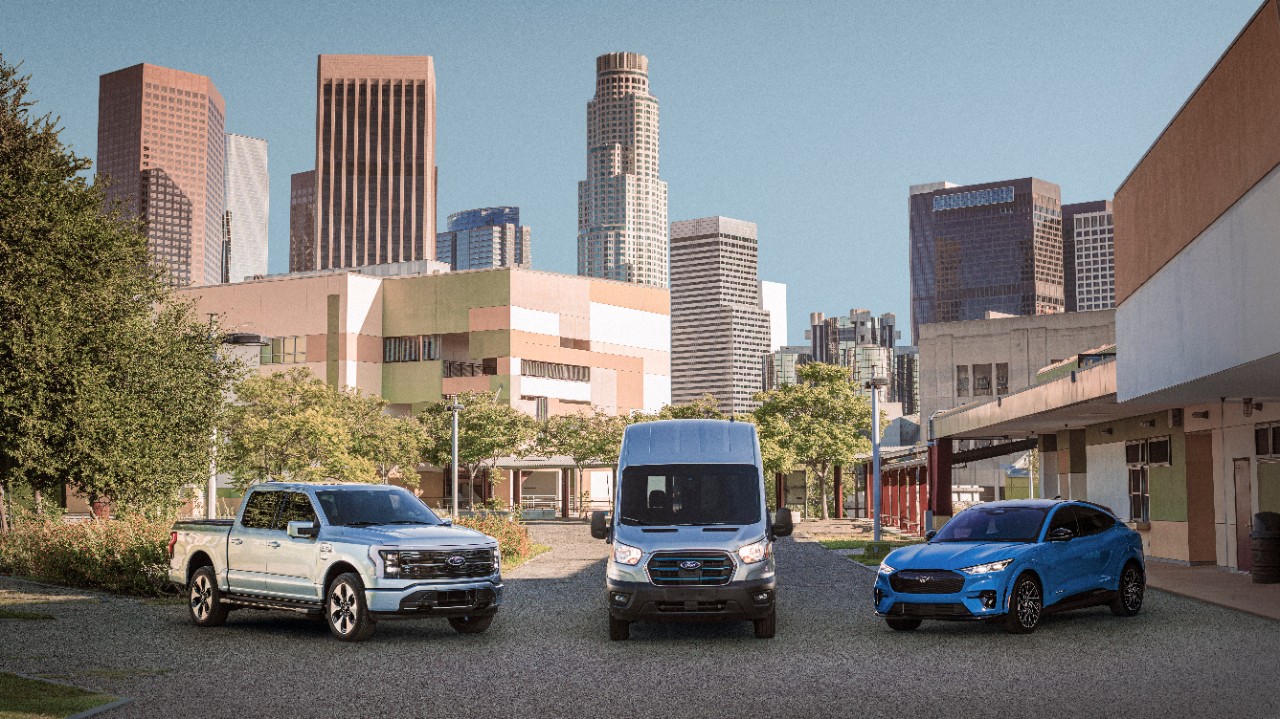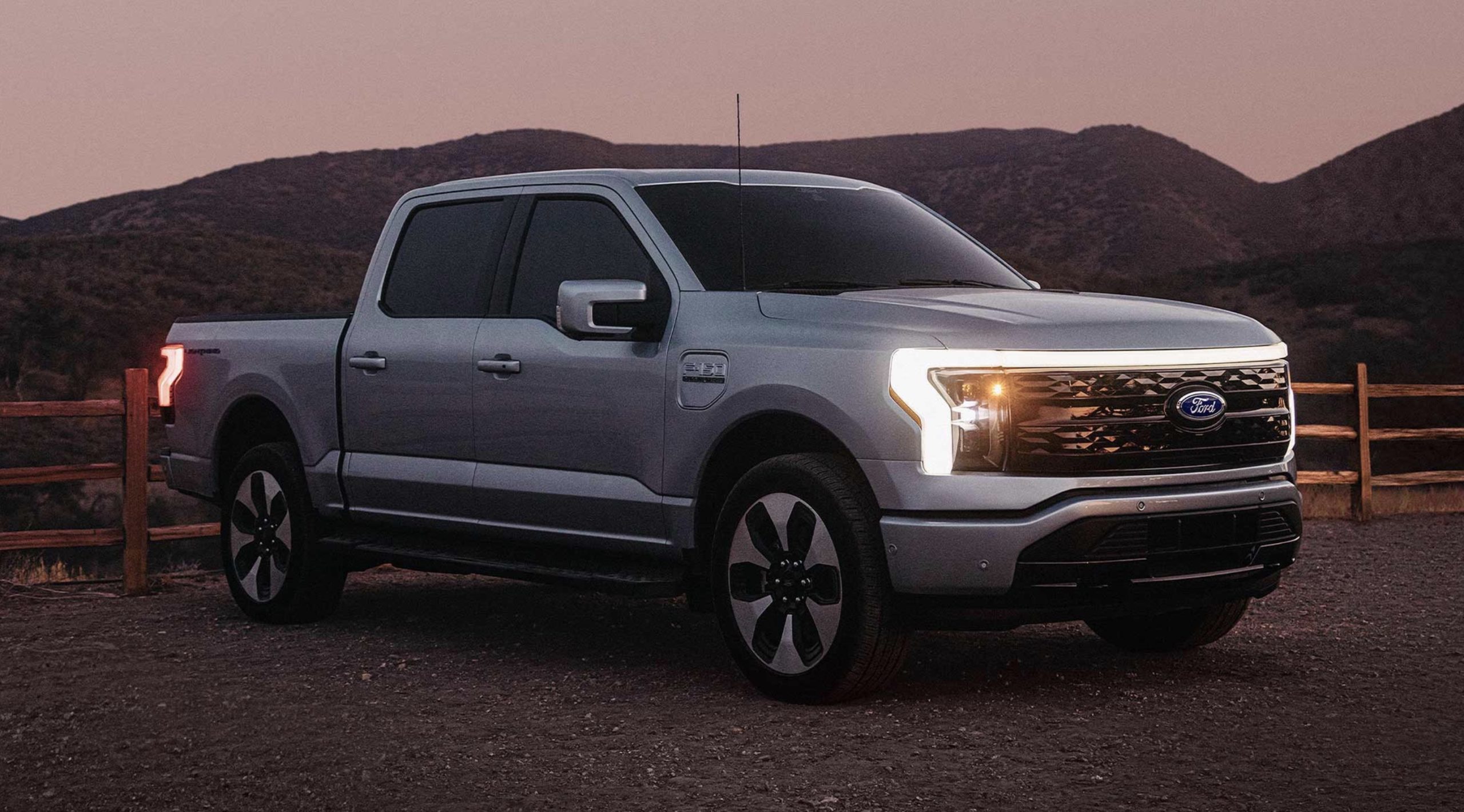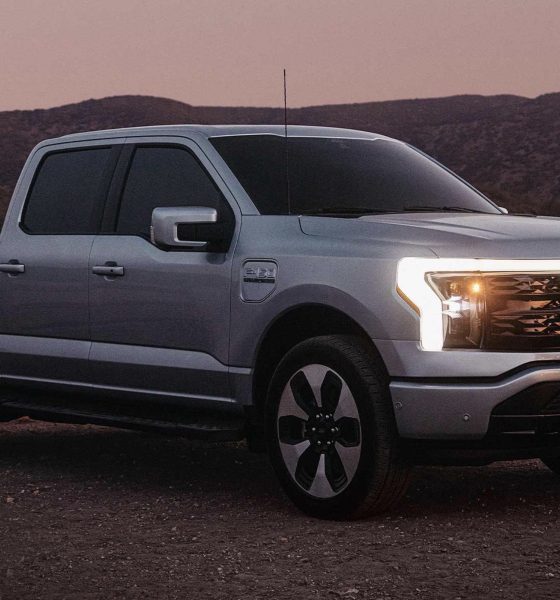Ford announced earlier this week that it would delay or completely cancel several electric vehicle models in an effort to align with consumer trends and hone in on a more profitable business after losing billions chasing Tesla.
While it may not be the most ideal thing, it is the best strategy for Ford right now, as it will shift more toward hybrids, leaning on current EV offerings and stopping the bleeding on financials.
Ford was arguably the most committed when it came to legacy automakers. It had put forth a solid investment plan that would see it expand its EV offerings over the course of a decade, bringing exciting offerings to each market based on its needs.
Ford’s love affair with EVs softens as profitability and consumer trends take focus
However, being the most committed does not always mean the most successful. Ford had suffered tremendous losses in 2023 because of its overwhelming commitment to EVs, so much so that CEO Jim Farley admitted at one point that it was on the lower end of its investment range for electrification moving forward.
“We’ll probably be on the low end of that range,” Farley said earlier this year about the $8 billion to $9 billion investment range. “And we’re being very consistent about our discipline on profitability.”
But now, things have totally changed.
Earlier this week, Ford all but admitted that it simply did not have the time or the money to keep going with its EV commitment. It was costing it billions, and instead of chasing after Tesla, it did what it should do: chase after money to keep it afloat. As Van Wilder’s dad said in the movie, “Sometimes in life, you have to realize a poor investment and cut your losses.”
Ford made the right choice. It was going along with the EV goals too far and too hard. Honda’s executives said recently that you simply cannot force people to buy something they don’t want. Right now, Teslas are what people want, at least in the United States, as the automaker, despite a growing number of competitors, continues to hold a sizeable lead in market share over competitors.
The lack of a truly competitive EV offering that appeals to consumers is what the issue is. There needs to be a product that truly outperforms Tesla in every way. That’s how people will switch, and that’s how EVs will be worth it. This goes for all companies, not just Ford.
To be the best, you have to beat the best.
“We’re committed to creating long-term value by building a competitive and profitable business,” Ford’s Vice Chair and CFO John Lawler said earlier this week as the company announced its softening EV stance. “With pricing and margin compression, we’ve made the decision to adjust our product and technology roadmap and industrial footprint to meet our goal of reaching positive EBIT within the first 12 months of launch for all new models.”
It will still bring forward a variety of new models, including a new truck, in the coming years. But for now, it is best that Ford does what it needs to do: scale back its commitment to EVs and continue to rely and lean on the Mustang Mach-E, F-150 Lightning, and E-Transit for the time being. The truth is that Ford simply did not and did not have enough of a consumer base that is interested in EVs, thus not justifying its mass commitment, and it might have cost them their business if it kept up the shtick.
From left to right: Ford’s F-150 Lightning, E-Transit van, and Mustang Mach-E (Credit: Ford)
Tempering its EV push and bringing new models as people want them is going to help Ford maintain capital while also softening the negative effects EVs have had on its financials. Ford has lost money on every EV it’s ever delivered to a customer, although it may not be the best thing for it to continue acting like things are all okay.
But in the meantime, Ford can do a few things to help consumers: offer affordable vehicles that cater to needs and develop a vehicle lineup that truly makes consumers on a massive scale consider things other than Tesla.
Leaning on classic names like the Mustang and F-150 and electrifying them might have won some people over. But it seems, especially with the popularity of the Bronco and Bronco Sport, Ford is missing a huge opportunity by not even hinting toward an EV version of the vehicle.
I think a lot of people might be disappointed, but this announcement seemed like it was coming sooner rather than later. As someone who has driven Fords and still owns one, I was hoping to make my next vehicle an electric Bronco. I have talked highly about the F-150 Lightning. But it is evident that it is still making a lot of its money selling the gas-powered F-Series and its other tried and true vehicle models.
I’d love to hear from you! If you have any comments, concerns, or questions, please email me at joey@teslarati.com. You can also reach me on Twitter @KlenderJoey, or if you have news tips, you can email us at tips@teslarati.com.

Elon Musk
Starlink passes 9 million active customers just weeks after hitting 8 million
The milestone highlights the accelerating growth of Starlink, which has now been adding over 20,000 new users per day.

SpaceX’s Starlink satellite internet service has continued its rapid global expansion, surpassing 9 million active customers just weeks after crossing the 8 million mark.
The milestone highlights the accelerating growth of Starlink, which has now been adding over 20,000 new users per day.
9 million customers
In a post on X, SpaceX stated that Starlink now serves over 9 million active users across 155 countries, territories, and markets. The company reached 8 million customers in early November, meaning it added roughly 1 million subscribers in under seven weeks, or about 21,275 new users on average per day.
“Starlink is connecting more than 9M active customers with high-speed internet across 155 countries, territories, and many other markets,” Starlink wrote in a post on its official X account. SpaceX President Gwynne Shotwell also celebrated the milestone on X. “A huge thank you to all of our customers and congrats to the Starlink team for such an incredible product,” she wrote.
That growth rate reflects both rising demand for broadband in underserved regions and Starlink’s expanding satellite constellation, which now includes more than 9,000 low-Earth-orbit satellites designed to deliver high-speed, low-latency internet worldwide.
Starlink’s momentum
Starlink’s momentum has been building up. SpaceX reported 4.6 million Starlink customers in December 2024, followed by 7 million by August 2025, and 8 million customers in November. Independent data also suggests Starlink usage is rising sharply, with Cloudflare reporting that global web traffic from Starlink users more than doubled in 2025, as noted in an Insider report.
Starlink’s momentum is increasingly tied to SpaceX’s broader financial outlook. Elon Musk has said the satellite network is “by far” the company’s largest revenue driver, and reports suggest SpaceX may be positioning itself for an initial public offering as soon as next year, with valuations estimated as high as $1.5 trillion. Musk has also suggested in the past that Starlink could have its own IPO in the future.
News
NVIDIA Director of Robotics: Tesla FSD v14 is the first AI to pass the “Physical Turing Test”
After testing FSD v14, Fan stated that his experience with FSD felt magical at first, but it soon started to feel like a routine.

NVIDIA Director of Robotics Jim Fan has praised Tesla’s Full Self-Driving (Supervised) v14 as the first AI to pass what he described as a “Physical Turing Test.”
After testing FSD v14, Fan stated that his experience with FSD felt magical at first, but it soon started to feel like a routine. And just like smartphones today, removing it now would “actively hurt.”
Jim Fan’s hands-on FSD v14 impressions
Fan, a leading researcher in embodied AI who is currently solving Physical AI at NVIDIA and spearheading the company’s Project GR00T initiative, noted that he actually was late to the Tesla game. He was, however, one of the first to try out FSD v14.
“I was very late to own a Tesla but among the earliest to try out FSD v14. It’s perhaps the first time I experience an AI that passes the Physical Turing Test: after a long day at work, you press a button, lay back, and couldn’t tell if a neural net or a human drove you home,” Fan wrote in a post on X.
Fan added: “Despite knowing exactly how robot learning works, I still find it magical watching the steering wheel turn by itself. First it feels surreal, next it becomes routine. Then, like the smartphone, taking it away actively hurts. This is how humanity gets rewired and glued to god-like technologies.”
The Physical Turing Test
The original Turing Test was conceived by Alan Turing in 1950, and it was aimed at determining if a machine could exhibit behavior that is equivalent to or indistinguishable from a human. By focusing on text-based conversations, the original Turing Test set a high bar for natural language processing and machine learning.
This test has been passed by today’s large language models. However, the capability to converse in a humanlike manner is a completely different challenge from performing real-world problem-solving or physical interactions. Thus, Fan introduced the Physical Turing Test, which challenges AI systems to demonstrate intelligence through physical actions.
Based on Fan’s comments, Tesla has demonstrated these intelligent physical actions with FSD v14. Elon Musk agreed with the NVIDIA executive, stating in a post on X that with FSD v14, “you can sense the sentience maturing.” Musk also praised Tesla AI, calling it the best “real-world AI” today.
News
Tesla AI team burns the Christmas midnight oil by releasing FSD v14.2.2.1
The update was released just a day after FSD v14.2.2 started rolling out to customers.

Tesla is burning the midnight oil this Christmas, with the Tesla AI team quietly rolling out Full Self-Driving (Supervised) v14.2.2.1 just a day after FSD v14.2.2 started rolling out to customers.
Tesla owner shares insights on FSD v14.2.2.1
Longtime Tesla owner and FSD tester @BLKMDL3 shared some insights following several drives with FSD v14.2.2.1 in rainy Los Angeles conditions with standing water and faded lane lines. He reported zero steering hesitation or stutter, confident lane changes, and maneuvers executed with precision that evoked the performance of Tesla’s driverless Robotaxis in Austin.
Parking performance impressed, with most spots nailed perfectly, including tight, sharp turns, in single attempts without shaky steering. One minor offset happened only due to another vehicle that was parked over the line, which FSD accommodated by a few extra inches. In rain that typically erases road markings, FSD visualized lanes and turn lines better than humans, positioning itself flawlessly when entering new streets as well.
“Took it up a dark, wet, and twisty canyon road up and down the hill tonight and it went very well as to be expected. Stayed centered in the lane, kept speed well and gives a confidence inspiring steering feel where it handles these curvy roads better than the majority of human drivers,” the Tesla owner wrote in a post on X.
Tesla’s FSD v14.2.2 update
Just a day before FSD v14.2.2.1’s release, Tesla rolled out FSD v14.2.2, which was focused on smoother real-world performance, better obstacle awareness, and precise end-of-trip routing. According to the update’s release notes, FSD v14.2.2 upgrades the vision encoder neural network with higher resolution features, enhancing detection of emergency vehicles, road obstacles, and human gestures.
New Arrival Options also allowed users to select preferred drop-off styles, such as Parking Lot, Street, Driveway, Parking Garage, or Curbside, with the navigation pin automatically adjusting to the ideal spot. Other refinements include pulling over for emergency vehicles, real-time vision-based detours for blocked roads, improved gate and debris handling, and Speed Profiles for customized driving styles.










